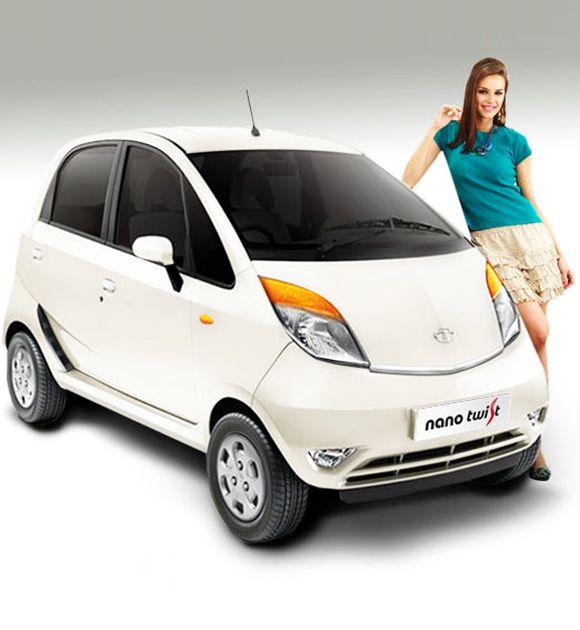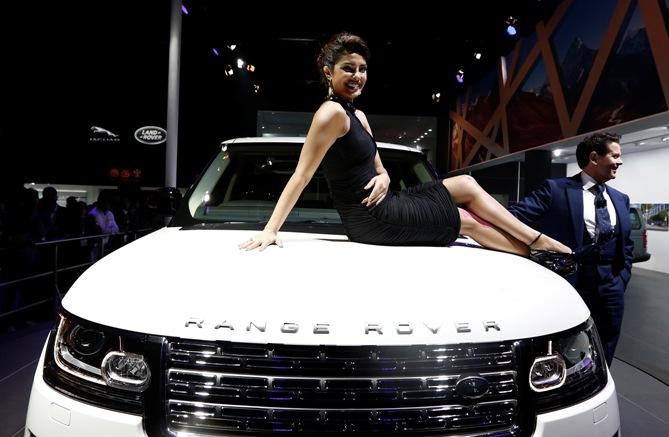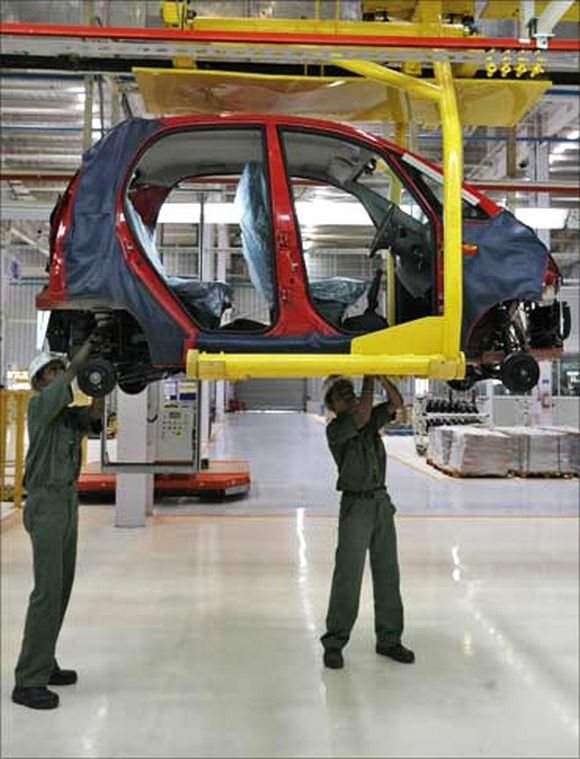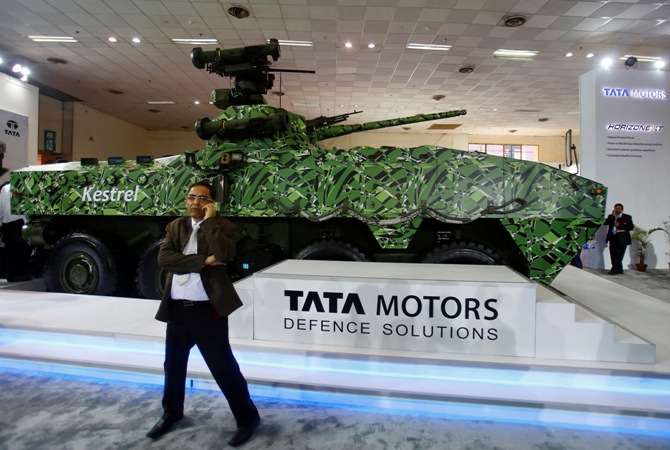 | « Back to article | Print this article |
Tata Motors needs to go off the beaten track
In 2013-14, the company sold only a little over 200,000 cars and sports utility vehicles, around the same as in 2005-06.
Ratan Tata is not known to show his frustration in public, but he was the first to ask the company that is closest to his heart to wake up.
In his last annual general meeting as chairman of Tata Motors, Mr Tata said the company needed a great deal of introspection to get back missing horsepower.
That was in August 2012; almost two years later, that hasn't happened yet.
The company's domestic market share is down to low single digits from nearly 15 per cent a decade ago and its bread-and-butter commercial vehicle business faces a slowdown as well as intense competition.
Thanks to a series of strategic failures and missed opportunities, the company has lost nearly a decade of growth, as reported in this newspaper last week.
Click NEXT to read further. . .
Tata Motors needs to go off the beaten track
In 2013-14, it sold a little over 200,000 cars and sports utility vehicles, around the same as in 2005-06.
However, the overall market size doubled during the period and most of the firm's rivals gained market share.
The company has countered the criticism by claiming that it is working on a long-term strategy to reclaim the number two spot and then go for the top slot. But it won't be an easy task.
When Tata Motors first entered the car market in late 1998, there were only two rivals to contend with.
Click NEXT to read further. . .
Tata Motors needs to go off the beaten track
Besides, its diesel-powered Indica and Indigo range became an instant hit, largely due to lack of alternatives.
But Tata Motors now faces competition from nearly a dozen global majors and needs disruptive innovation in terms of products, features and pricing.
So far this creativity has been missing.
The company has made no headway in building aspirations around its products and has been obsessed with its promise to provide value-for-money products made famous by the Indica tag line -- ‘more car per car’.
The disconnect reached its peak during the launch of the Nano.
Click NEXT to read further. . .
Tata Motors needs to go off the beaten track
Despite many global firsts to its credit, the product failed to excite buyers simply because it was positioned as the world's cheapest car rather than a smart city car that was easy on the pocket.
The Nano's failure not only hit the company's finances and market share, it soaked up time and resources that would have been better spent on consolidating Tata Motors' then leadership.
When sales of diesel cars began to boom in 2010 owing to high petrol prices, Tata Motors was still selling older models.
As a result, customers moved to its rivals who were offering newer models.
Click NEXT to read further. . .
Tata Motors needs to go off the beaten track
The problem has been exacerbated by the untimely demise of Karl Slym, Tata Motors' managing director and chief executive officer, leaving its domestic business without a chief executive just when it needs a decisive leadership.
The good thing is that the company's failure in the passenger vehicle segment has not translated into financial difficulty.
On the contrary, it has been one of the top-performing auto makers in the last five years, thanks to the stupendous success of Jaguar Land Rover.
That provides Tata Motors with the financial and technological resources to wage a long and expensive battle in order to regain lost ground.





